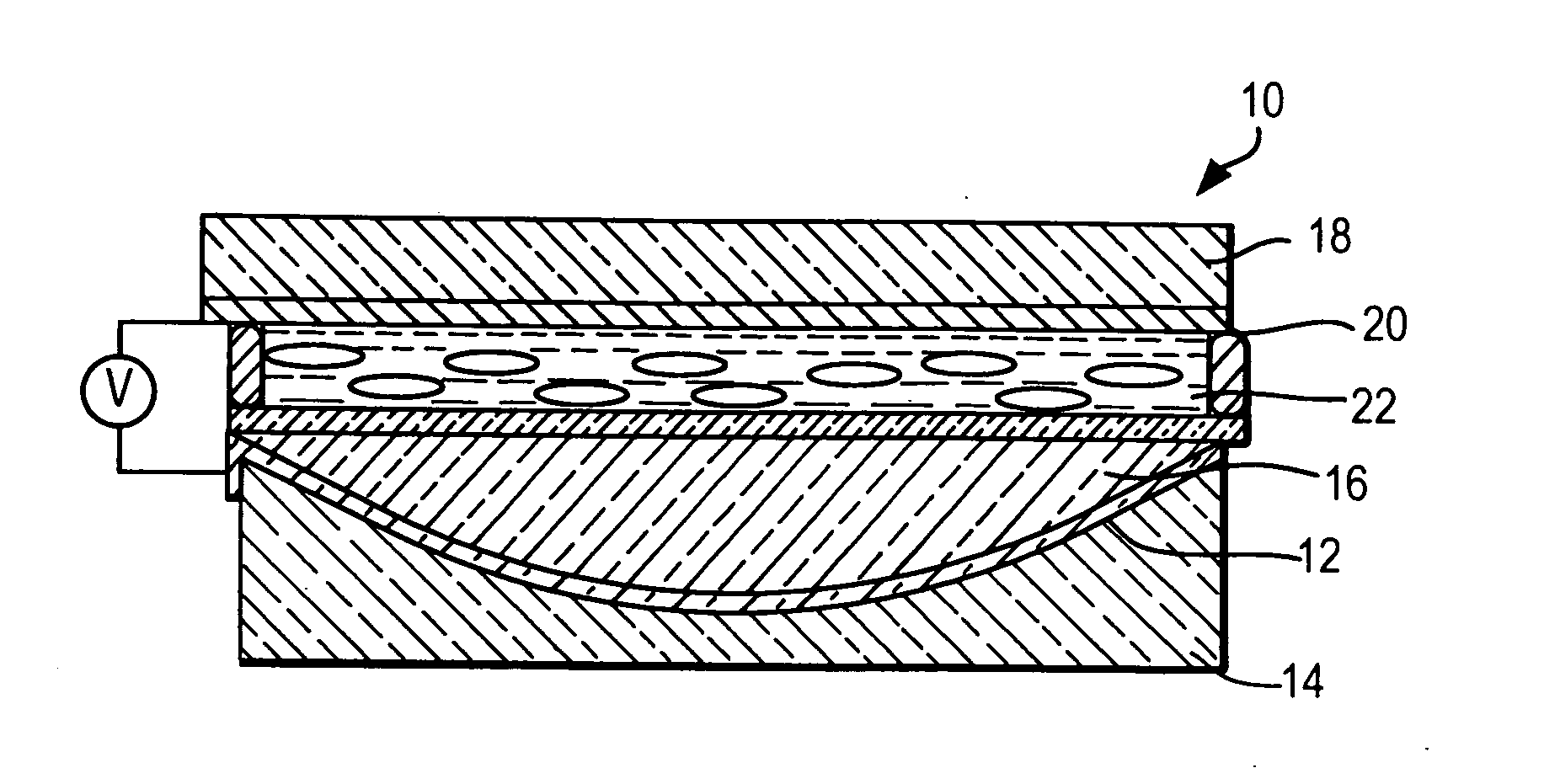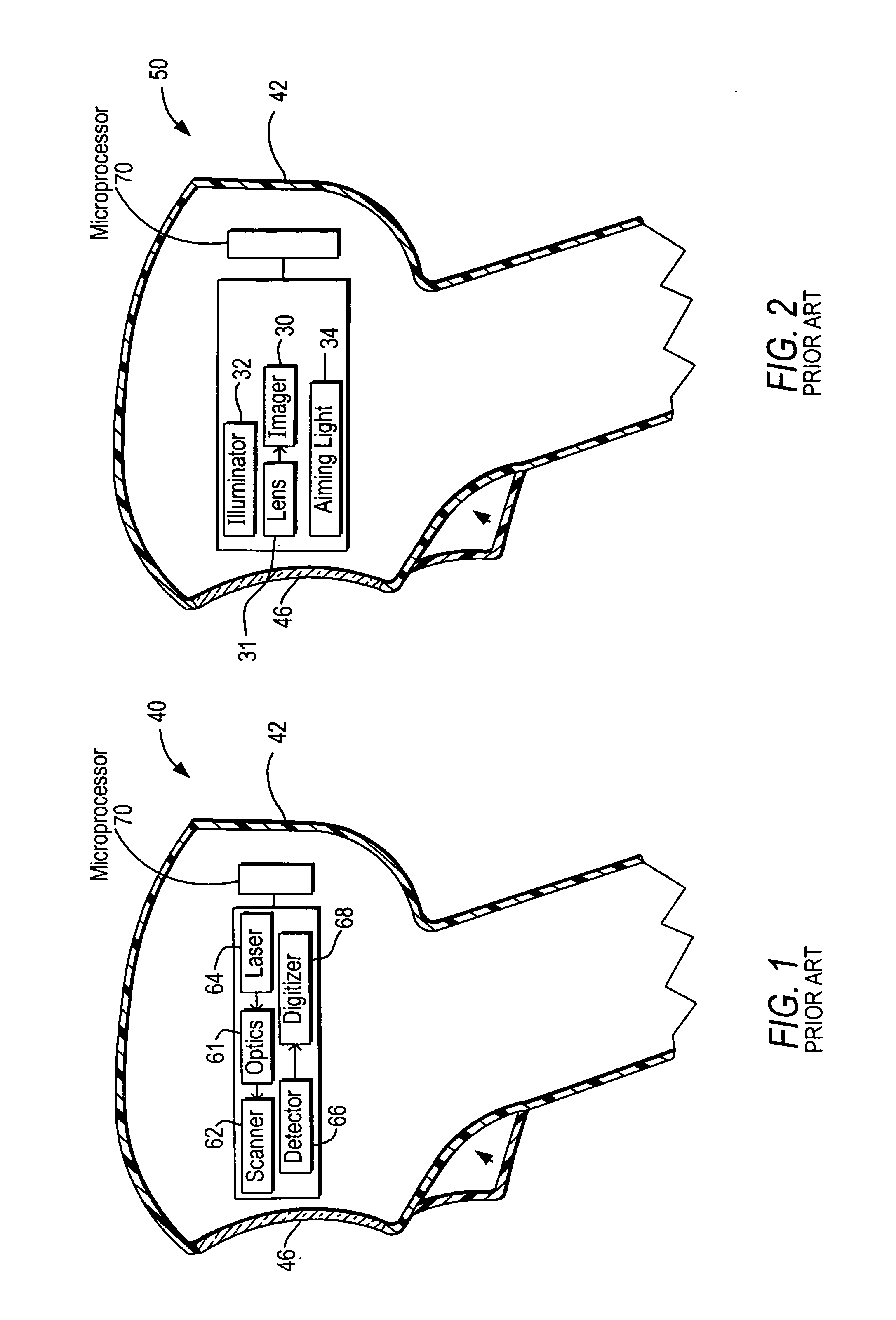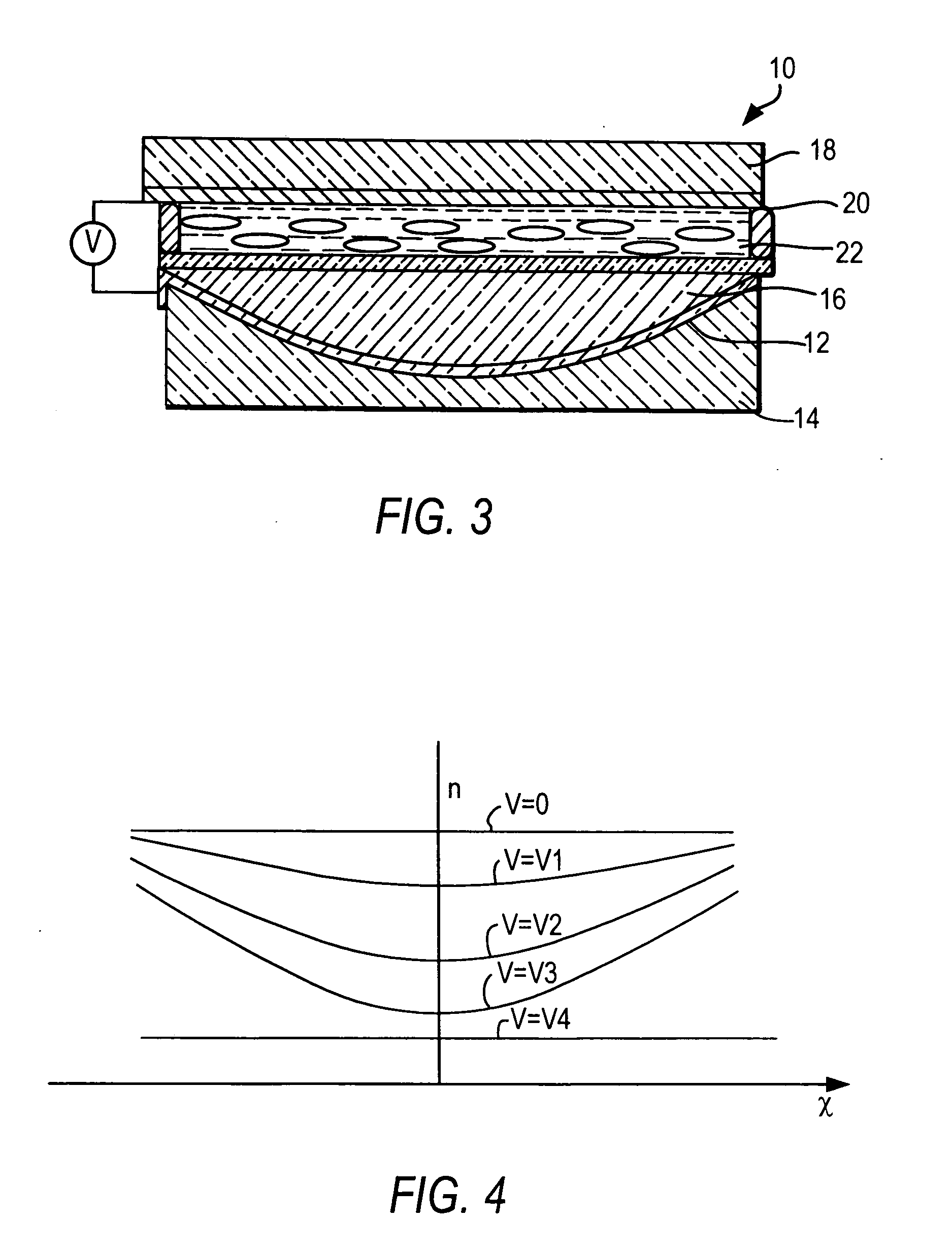Adaptive focusing using liquid crystal lens in electro-optical readers
- Summary
- Abstract
- Description
- Claims
- Application Information
AI Technical Summary
Benefits of technology
Problems solved by technology
Method used
Image
Examples
Embodiment Construction
[0025]FIG. 1 depicts a conventional moving laser beam reader 40 for electro-optically reading indicia, such as a symbol, that may use, and benefit from, the present invention. The beam reader 40 includes a scanner 62 in a housing 42 for scanning an outgoing laser beam from a laser 64 and / or a field of view of a light detector or photodiode 66 in a scan pattern, typically comprised of one or more scan lines, through a window 46 across the symbol for reflection or scattering therefrom as return light detected by the photodiode 66 during reading. The beam reader 40 also includes a focusing lens assembly or optics 61 for optically modifying the outgoing laser beam to have a large depth of field, and a digitizer 68 for converting an electrical analog signal generated by the detector 66 from the return light into a digital signal for subsequent decoding by a microprocessor or controller 70 into data indicative of the symbol being read.
[0026]FIG. 2 depicts a conventional imaging reader 50 ...
PUM
 Login to View More
Login to View More Abstract
Description
Claims
Application Information
 Login to View More
Login to View More - R&D
- Intellectual Property
- Life Sciences
- Materials
- Tech Scout
- Unparalleled Data Quality
- Higher Quality Content
- 60% Fewer Hallucinations
Browse by: Latest US Patents, China's latest patents, Technical Efficacy Thesaurus, Application Domain, Technology Topic, Popular Technical Reports.
© 2025 PatSnap. All rights reserved.Legal|Privacy policy|Modern Slavery Act Transparency Statement|Sitemap|About US| Contact US: help@patsnap.com



